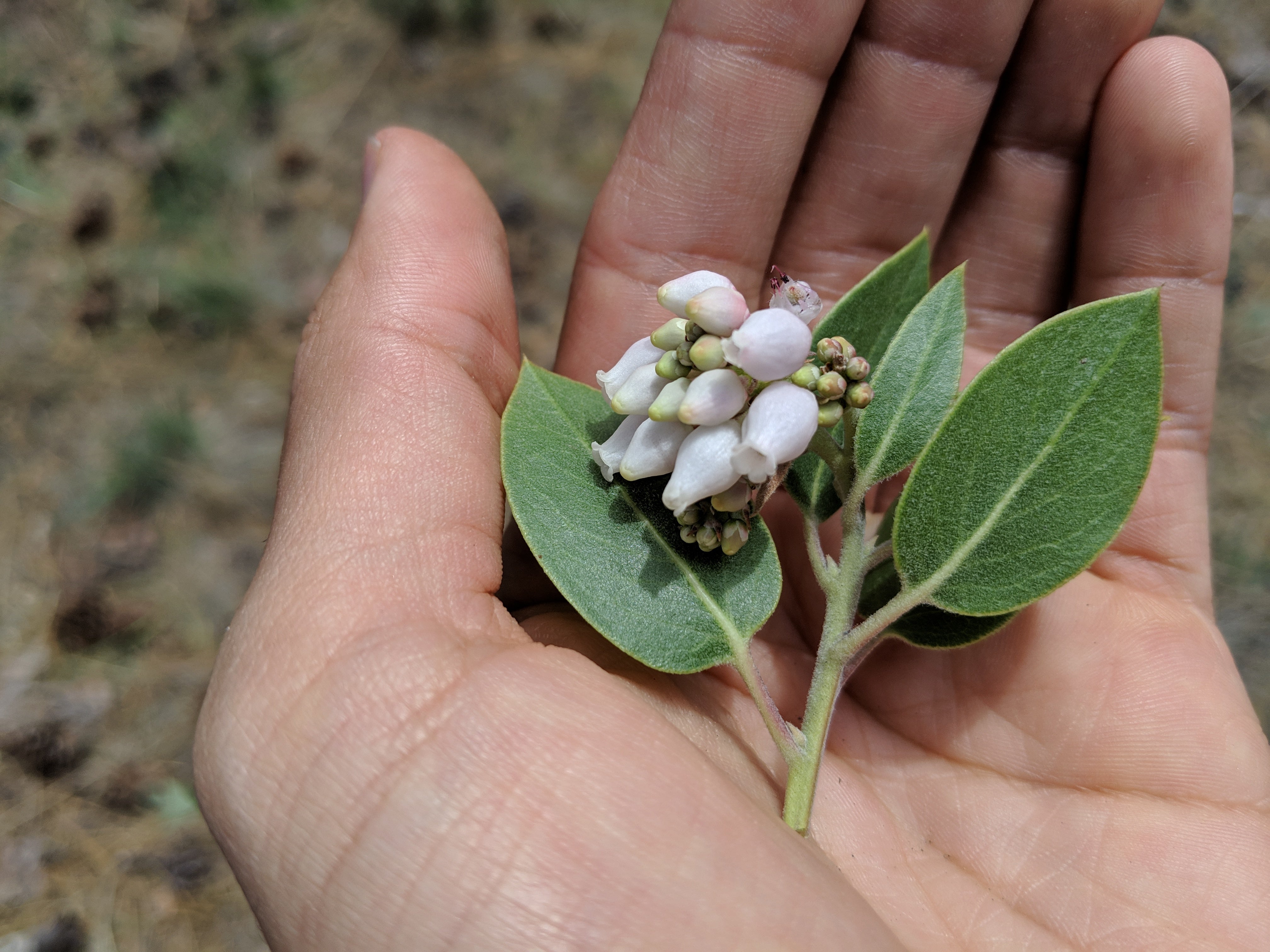Article: How to plant manzanita in your garden

How to plant manzanita in your garden
One of the most beautiful and versatile native plants that grows along California's coastal ranges, manzanita (Arctostaphylos spp.) is the best native plant to plant in your garden. With its iconic rust-colored but shiny bark, vivid foliage colors, and breathtaking bell-shaped flowers, manzanita shrubs bring a truly special touch to any garden. Plus you're helping the environment by planting native!
Whether you’re looking to attract birds or butterflies, create privacy borders for your yard, build habitat for other species, or just make your gardens beautiful with color and texture, manzanita is an excellent choice for your native plant garden.
Here are some quick tips to get you started on planting your very own manzanita shrub in your native plant garden.
The best reason to plant a manzanita shrub in your garden
Manzanita is hardy and resilient against heat, drought and other harsh environments. These California native plants are an especially ideal choice for those looking to create a drought tolerant garden right at home. Manzanitas are a good choice if you want to incorporate a Mediterranean-style look to your garden (also known as chaparral).
The five best tips for planting manzanita shrubs in your garden
1. Select the Right Location
Manzanita plants thrive in well-drained soil, full sun, and low humidity environments, which makes them perfect for the west coast of the United States. Before planting a manzanita plant, ensure to examine your garden carefully.
Manzanitas prefer full sun to partial shade. Choose a spot that receives at least six hours of sunlight daily. Avoid planting them in areas with heavy shade.
loose soil. Avoid planting them in areas that are prone to standing water, as they don't do well in overly wet conditions. With some careful planning and a little bit of research, your manzanita shrubs can thrive and become a beautiful addition to your native plant garden.
2. Watering
Manzanita plants are drought-resistant, meaning they handle dry conditions quite well. However, during the first year after planting, a regular watering schedule is essential to help the plant establish its roots. In the first year, they need more water as they establish themselves.
Water your manzanita shrubs deeply but infrequently to mimic their natural habitat and promote deep rooting. Ensure that their soil is moist at a depth of six inches. Slow, drip line watering is preferred to ensure that water gets down to the roots and doesn't just wet the surface.
After the first year, reduce watering frequency as the plant should be well-established by then. Over-watering can lead to root rot which is one of the few things that can seriously harm these hardy shrubs. Always remember, when in doubt, it's better to underwater than overwater your manzanita.
3. Mulching manzanita plants
Mulching helps to keep the soil moist, reduces weed growth, and improves soil health. Ensure to maintain a 3-inch depth of organic mulch, such as wood chips, around newly planted manzanita plants to allow for adequate oxygen flow to the roots. Do not add mulch after planting for at least one year.
When applying mulch, ensure it is not in contact with the trunk of the plant as it can cause rot and attract pests. Refresh the mulch annually, or as needed, to keep your manzanita healthy.
4. Fertilization
Manzanita shrubs generally do not require heavy fertilization as they are adapted to survive in poor soil conditions. If your soil is particularly poor, however, a light application of a slow-release, all-purpose organic fertilizer in the early spring can give your plants a boost.
Avoid using high nitrogen fertilizers as manzanitas are adapted to low nutrient soils and excess nitrogen can lead to overly rapid growth and reduced resistance to drought. Only use light fertilizers, and make certain you are adding them at the correct time.
As with watering, it's better to err on the side of under-fertilizing rather than over-fertilizing your manzanita. Always remember that maintaining the natural conditions similar to their native habitat is crucial for the healthy growth of manzanita shrubs.
5. Pruning manzanita plants
Pruning is an essential part of maintaining the health and aesthetics of your manzanita shrubs. The main objective of pruning should be to remove dead or diseased wood, promote better air circulation inside the plant, and maintain its natural, rounded shape.
Typically, manzanitas should be pruned during late winter or early spring before new growth begins. Be careful to make clean cuts and avoid damaging the underlying branches or bark.
Prune sparingly, as manzanitas do not recover well from severe pruning, and never remove more than one-third of the plant at a time. Always remember to sterilize your pruning tools before and after use to prevent the spread of plant diseases.
With these simple pruning techniques, your manzanita shrubs can thrive and continue to be a beautiful centerpiece in your native plant garden.
Conclusion
Successful cultivation of manzanita in your native plant garden hinges on five key considerations:
- selecting the right location with well-draining soil and ample sunlight
- watering sparingly to mimic natural rainfall patterns
- mulching to conserve soil moisture and suppress weeds
- fertilizing sparingly to prevent overgrowth and maintain drought resistance
- pruning with care to preserve the shrub's health and natural shape.
By adhering to these guidelines, you can cultivate thriving manzanita shrubs that not only enhance the aesthetics of your garden but also serve as a testament to the beauty and resilience of native plants.
Remember, working with nature rather than against it is always the best approach to gardening.


Leave a comment
This site is protected by hCaptcha and the hCaptcha Privacy Policy and Terms of Service apply.